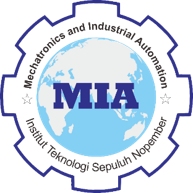Carment: Magnesium Cement From Glass Waste As A Solution To The Cement Industry's Carbon Emission Problems
Abstract
Keywords
Full Text:
PDFReferences
B. P. Statistik and (BPS - Statistics Indonesia), “Penduduk Berumur 15 Tahun Ke Atas Menurut Golongan Umur dan Jenis Kegiatan Selama Seminggu yang Lalu, 2008 – 2019,” 2021. https://www.bps.go.id/indicator/6/529/1/penduduk-berumur-15-tahun-ke-atas-menurut-jenis-kegiatan.html (accessed Dec. 13, 2022).
B. E. I. Abdelrazig, J. H. Sharp, and B. E. Jazairi, “Mortars made from Magnesia-Phosphate cement,” Cem. Concr. Res., vol. 18, no. 3, pp. 415–425, 1988.
D. M. Roy, “New Strong Cement Materials: Chemically Bonded Ceramics.,” U.S. woman Eng., vol. 34, no. 2, pp. 32–38, 1988.
W. Chen, C. Wu, H. Yu, Y. Chen, and S. Zheng, “Effect of calcined MgO-rich byproduct from the extraction of Li2CO3 on the performance of magnesium phosphate cement,” J. Adv. Concr. Technol., vol. 15, no. 12, pp. 749–759, 2017, doi: 10.3151/jact.15.749.
M. A. Haque and B. Chen, “Research progresses on magnesium phosphate cement: A review,” Constr. Build. Mater., vol. 211, pp. 885–898, 2019, doi: 10.1016/j.conbuildmat.2019.03.304.
S. A. Walling and J. L. Provis, “Magnesia-Based Cements: A Journey of 150 Years, and Cements for the Future?,” Chem. Rev., vol. 116, no. 7, pp. 4170–4204, 2016, doi: 10.1021/acs.chemrev.5b00463.
Novacem, “Novacem Carbon Negative Cement,” 2010.
A. Naqi and J. G. Jang, “Recent progress in green cement technology utilizing low-carbon emission fuels and raw materials: A review,” Sustain., vol. 11, no. 2, 2019, doi: 10.3390/su11020537.
N. J. Coleman, Q. Li, and A. Raza, “Synthesis, structure and performance of calcium silicate ion exchangers,” Physicochem. Probl. Miner. Process., vol. 50, no. 1, pp. 5–16, 2014.
Q. Deng et al., “Effect of waste glass on the properties and microstructure of potassium magnesium phosphate cement,” Materials (Basel)., vol. 14, no. 8, 2021, doi: 10.3390/ma14082073.
A. M. Lauermannová et al., “Case study on MOC composites enriched by foamed glass and ground glass waste: Experimental assessment of material properties and performance,” Case Stud. Constr. Mater., vol. 18, no. November 2022, 2023, doi: 10.1016/j.cscm.2023.e01836.
DOI: http://dx.doi.org/10.12962%2Fj23378557.v9i1.a15158
Refbacks
- There are currently no refbacks.
This work is licensed under a Creative Commons Attribution 4.0 International License. IPTEK The Journal of Engineering published by Pusat Publikasi Ilmiah, Institut Teknologi Sepuluh Nopember.
Please contact us for order or further information at: email: iptek.joe[at]gmail.com Fax/Telp: 031 5992945. Editorial Office Address: Pusat Riset Building 6th floor, ITS Campus, Sukolilo, Surabaya 60111, Indonesia.








